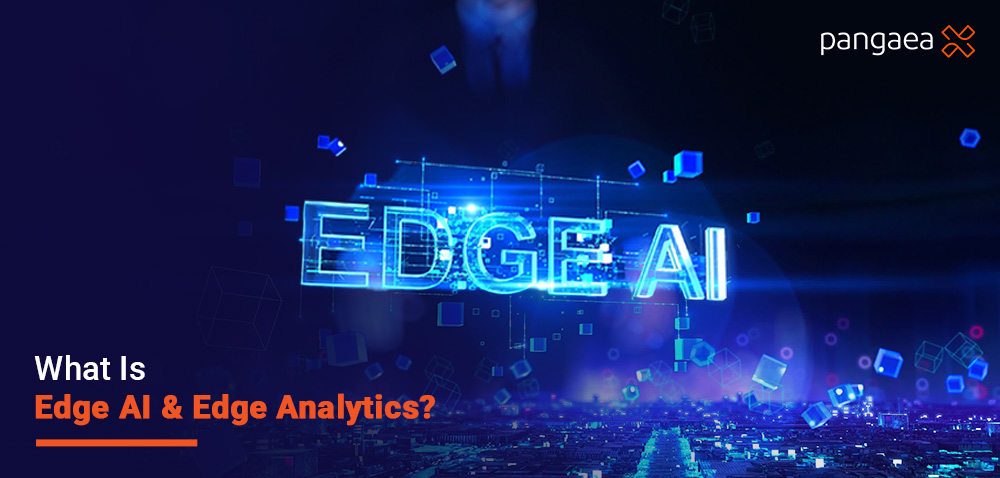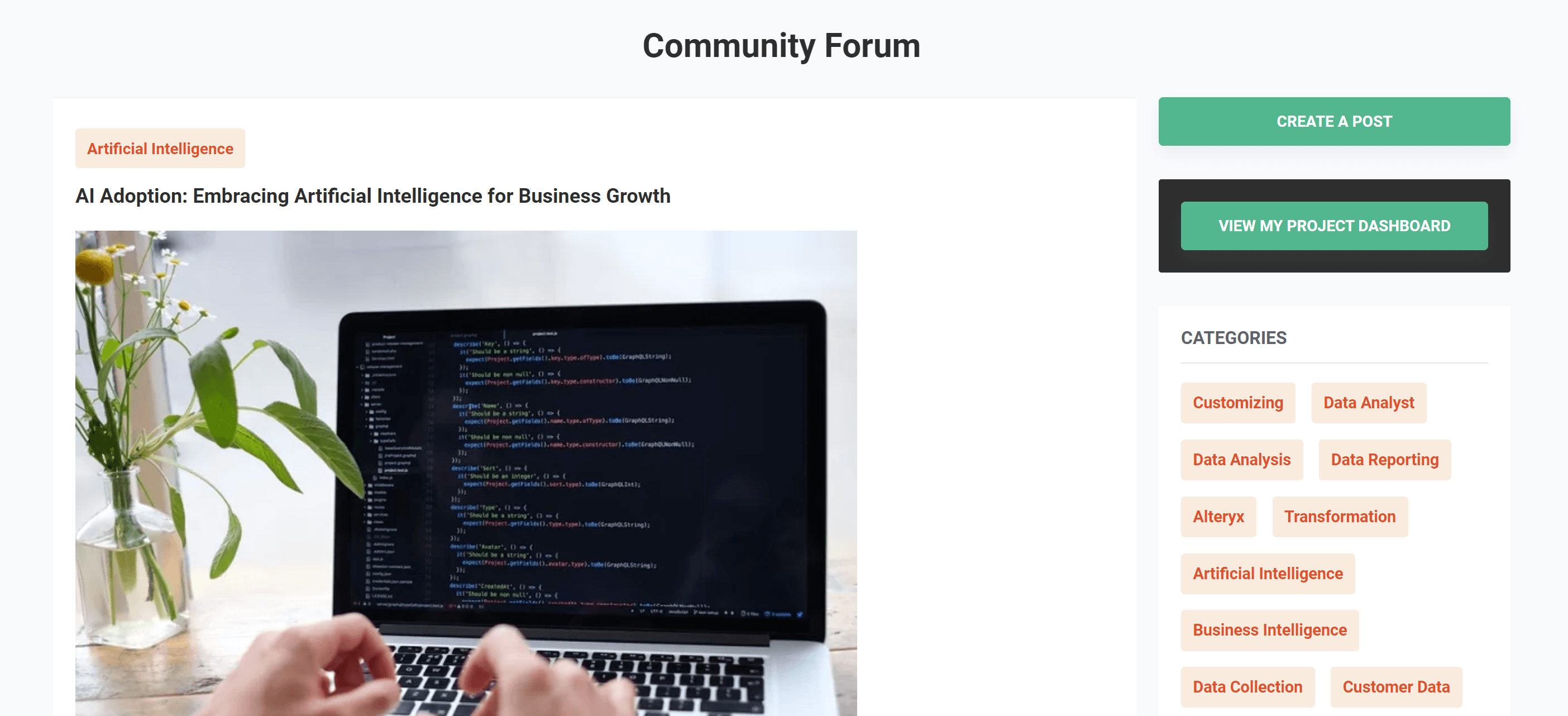What Is Edge AI & Edge Analytics? The Future of Real-Time Data Processing

In an era where data fuels decisions, speed and efficiency are non-negotiable. Edge AI and Edge Analytics are transforming how we process and analyze data, shifting computation from distant cloud servers to the very devices where data is generated.
These technologies deliver real-time processing, reduced latency, and enhanced privacy, positioning them as cornerstones of the future of data-driven innovation. From smart factories optimizing production to wearables monitoring health, Edge AI and Edge Analytics are reshaping industries at their core.
This comprehensive guide explores their definitions, differences from traditional systems, benefits, applications, and their growing relevance to both data analytics professionals and freelance data analysts. Let’s dive into this cutting-edge revolution.
Understanding Edge AI: The Power of Intelligence at the Edge
Edge AI is revolutionizing how devices interact with data. Instead of waiting for instructions from a remote cloud server, devices embedded with AI capabilities act autonomously, making intelligent decisions at lightning speed. This transformation enables industries to push the boundaries of what’s possible in real-time environments.
From energy grids adjusting output dynamically to smart home devices offering hyper-personalized experiences, Edge AI is changing the way technology interacts with the physical world. As businesses seek faster decision-making and reduced operational bottlenecks, Edge AI becomes an invaluable tool for gaining a competitive advantage.
What Is Edge AI?
Definition:
Edge AI integrates artificial intelligence directly into edge devices like smartphones, IoT sensors, and autonomous vehicles, allowing them to analyze data locally without constant cloud connectivity.
Purpose:
It delivers real-time insights, such as a smart speaker recognizing voice commands instantly.
Key Advantage:
By enabling local data processing, Edge AI minimizes internet dependency and accelerates decision-making, especially for time-sensitive applications.
Beyond these basics, Edge AI is particularly valuable in environments with intermittent or limited connectivity, such as remote locations, rural areas, or on-the-move applications like drones and maritime systems. It enhances system autonomy, making it indispensable for mission-critical tasks.
How Does Edge AI Work?
Edge AI uses machine learning models that are trained in the cloud but deployed directly on edge devices. For instance, a security camera equipped with Edge AI can detect intrusions in real time using computer vision without sending footage to a remote server.
The process involves:
- Collecting data
- Running AI algorithms locally
- Generating outputs within milliseconds
This real-time ability is critical for applications like autonomous vehicles navigating dynamic environments.
Additionally, Edge AI devices continuously learn from data streams, adapting algorithms for improved performance over time. Some models even support federated learning, where multiple devices contribute to a shared learning model without compromising data privacy.
How Does Edge AI Differ from Traditional AI?
Processing Location
Traditional AI relies heavily on centralized cloud servers, whereas Edge AI processes data locally on devices like sensors and mobile phones.
Latency
Edge AI delivers near-instantaneous results, unlike traditional AI, which can experience delays due to network dependency.
Connectivity
Edge AI functions offline or with minimal connectivity, unlike traditional AI systems that typically demand constant internet access.
Scalability and Cost
Edge AI significantly reduces cloud storage and bandwidth costs, making it scalable for large-scale IoT implementations compared to traditional AI’s resource-heavy approach.
Moreover, Edge AI solutions are more energy-efficient, as they limit the need for continuous data transmission and remote processing. This efficiency is especially valuable in battery-powered devices and green computing initiatives.
Edge AI and Data Analytics: A Perfect Match
Edge AI elevates data analytics by enabling rapid, localized decision-making.
In retail, for example, smart shelves use Edge AI to monitor inventory levels and predict restocking needs—a powerful form of predictive analytics.
For freelance data analysts, mastering Edge AI tools unlocks opportunities to analyze decentralized datasets and drive AI-powered insights, offering a competitive edge in the evolving data landscape.
As data becomes increasingly distributed across countless devices, traditional data pipelines struggle to keep up. Edge AI bridges this gap by empowering devices to filter and analyze critical information before it reaches central systems. This not only conserves bandwidth but also enhances data relevance and accuracy.
Freelance data analysts can also use edge-powered insights to build faster, smarter dashboards for clients, especially in sectors like logistics, energy management, and smart agriculture.
How Edge Analytics Turns Data into Action at the Source
Edge Analytics transforms raw data into actionable insights at the source, reducing reliance on centralized data centers. Organizations unlock faster response times and more efficient resource usage by processing data at its origin.
Whether a wind turbine adjusts blade angles in response to changing wind speeds or a smart irrigation system optimizes water usage in real time, Edge Analytics makes proactive, data-driven decisions possible right at the device level.
What Is Edge Analytics?
Definition:
Edge Analytics focuses on analyzing data at its origin point—on the device where it’s generated—bypassing the need to send massive datasets to the cloud.
Purpose:
It provides immediate insights, such as traffic sensors optimizing signal timing based on real-time vehicle data.
Key Advantage:
By handling data at the edge, it significantly reduces latency and cloud dependency, streamlining real-time analytics.
Edge Analytics also plays a crucial role in environments with privacy concerns. In healthcare and finance, for example, sensitive data can be analyzed securely on-site, ensuring compliance with strict regulations like HIPAA and GDPR.
Key Features of Edge Analytics
Data Processing Efficiency
Local analysis eases the burden on cloud infrastructure, saving critical resources.
Latency Reduction
Immediate data processing is essential for high-speed applications like autonomous driving, where milliseconds matter.
Scalability
With billions of IoT devices worldwide, Edge Analytics scales effortlessly, managing massive data volumes without overwhelming networks.
Further enhancing its appeal, Edge Analytics supports “data thinning,” where only the most valuable insights are sent to the cloud, reducing noise and improving the efficiency of centralized systems.
Connecting Edge Analytics to Data Analytics Careers
Edge Analytics is revolutionizing the data analytics field, creating demand for professionals who can design and interpret edge-based systems.
Freelance data analysts can excel by mastering tools such as Python, SQL, and IoT platforms to process real-time data and integrate edge insights into broader strategies.
As IoT adoption accelerates, freelancers with these advanced capabilities will enjoy increasing demand and lucrative opportunities.
Data analysts who embrace Edge Analytics can also provide valuable consultancy for companies transitioning from traditional cloud models. These professionals will be key players in building efficient edge ecosystems and training on-site teams to handle real-time analytics.
Why Edge AI and Edge Analytics Are the Future
The rise of Industry 4.0, smart devices, and the Internet of Things (IoT) firmly positions Edge AI and Edge Analytics as pillars of digital transformation.
They tackle cloud computing’s limitations—such as latency, high bandwidth costs, and privacy risks—while delivering the instant insights that modern businesses need.
Benefits Driving Adoption
Cost Efficiency
On-device processing cuts down bandwidth and cloud storage costs, providing significant advantages for businesses scaling IoT deployments.
Data Privacy
By keeping sensitive data on-device, Edge AI and Edge Analytics enhance data security—an essential feature for sectors like healthcare and finance.
Real-Time Decision Making
From smart cities to retail environments, instant data analysis leads to better, faster decision-making.
Another key driver is the reduction in energy consumption. With Edge AI and Analytics, devices consume less power for data transmission, making deployments more sustainable and environmentally friendly.
Impact on Data Analytics and Freelance Roles
The shift to edge-based systems is reshaping job markets. Freelance data analysts can seize opportunities by:
- Specializing in edge workflows
- Analyzing decentralized datasets
- Supporting digital transformation initiatives
As remote work becomes mainstream, freelancers can collaborate globally, harnessing edge technologies to deliver meaningful insights.
In particular, freelance analysts can offer services such as edge-to-cloud integration, anomaly detection, and real-time data visualization—all of which are becoming essential for businesses aiming to stay competitive in a data-first world.
Real-World Applications of Edge AI and Edge Analytics
Edge AI and Edge Analytics are already fueling transformative applications across industries, demonstrating their versatility and power.
Healthcare: Saving Lives with Speed
Edge AI enables wearables to monitor patient vitals in real time, while Edge Analytics processes this data on-site to detect anomalies and alert doctors immediately.
This application of healthcare analytics not only improves patient outcomes but also reduces strain on healthcare facilities.
For instance, advanced pacemakers and glucose monitoring systems equipped with Edge AI can automatically adjust dosage or trigger alerts, empowering patients and healthcare providers with timely interventions.
Manufacturing: Predictive Maintenance
Manufacturing industries leverage Edge Analytics to monitor equipment through industrial IoT sensors. Predictive maintenance helps:
- Detect failures before they occur
- Minimize downtime
- Boost overall operational efficiency
Additionally, edge solutions can optimize energy consumption in factories, monitor environmental conditions, and support quality control by analyzing production line data in real time.
Opportunities for Freelance Data Analysts
Freelancers can thrive in these sectors by offering:
- IoT data analysis services
- Industry-specific dashboards
- Predictive maintenance insights
As more businesses integrate edge technologies, freelance projects in healthcare, manufacturing, and other industries are poised to grow.
Freelancers with niche expertise can also collaborate with hardware manufacturers, offering analytics-as-a-service for new devices and helping clients unlock the full potential of their edge infrastructure.
Overcoming Challenges: Navigating the Future of Edge AI and Edge Analytics
Understanding the Roadblocks
Despite their transformative potential, Edge AI and Edge Analytics face significant hurdles. Hardware limitations often restrict processing power on edge devices, while integration complexities make it challenging to blend edge solutions with existing systems. Additionally, there is a growing shortage of skilled professionals who can effectively design, deploy, and manage edge-based architectures.
Innovations Paving the Way Forward
Encouragingly, advancements in hardware technology are rapidly addressing these barriers. The development of advanced edge chips is making devices more powerful and energy-efficient, accelerating the adoption of edge computing across industries. Meanwhile, specialized training programs are helping to bridge the skills gap, equipping data analysts and engineers with the expertise needed to thrive in this evolving landscape.
Democratizing Edge Technology
The rise of open-source edge frameworks and no-code platforms is further simplifying the deployment of Edge AI and Edge Analytics solutions. These tools enable businesses and freelance analysts to implement sophisticated edge systems without requiring deep technical know-how. As accessibility improves, more organizations can leverage the benefits of edge computing, empowering a broader range of industries to innovate at the data source.
The Role of Data Analysts in Shaping the Future
For freelance data analysts, upskilling in edge technologies is critical. Mastery in areas like IoT analytics and AI deployment will position analysts at the forefront of this evolution, helping businesses harness the full potential of edge solutions.
Analysts who invest in certifications, workshops, and practical projects today will become tomorrow’s sought-after experts in an increasingly edge-dominated landscape.
Conclusion: Embracing the Edge Revolution
Edge AI and Edge Analytics are redefining the way we process data—delivering faster decisions, improved privacy, and real-time insights right at the source. From smart factories to wearable tech, these innovations are accelerating digital transformation across industries. For freelance data analysts, this shift presents a growing demand for skills that align with decentralized, intelligent systems.
To tap into these emerging opportunities, platforms like Pangaea X are empowering data professionals to connect with global businesses and contribute to next-gen projects. As organizations adopt edge technologies to stay competitive, now is the time to upskill, embrace the edge, and be part of this data-driven future.
Get your data results fast and accelerate your business performance with the insights you need today.



